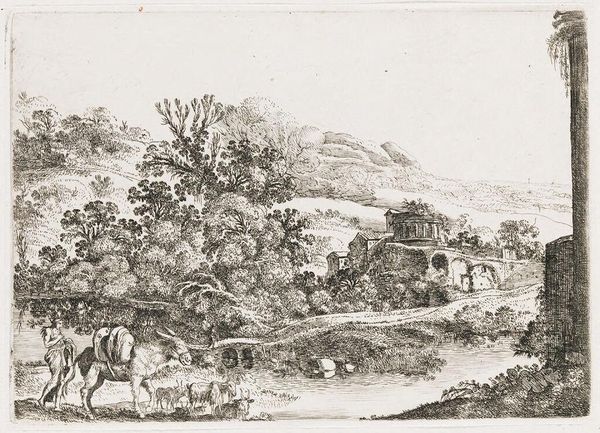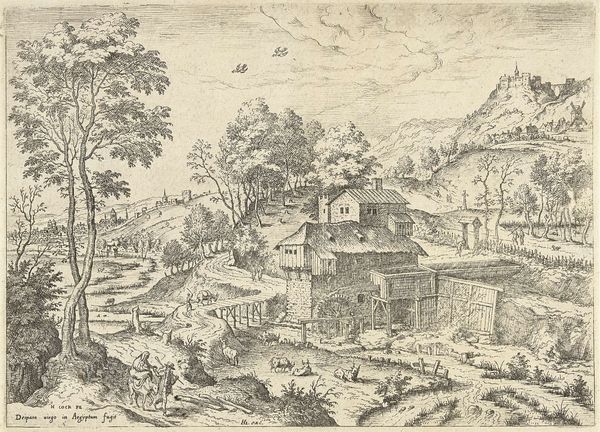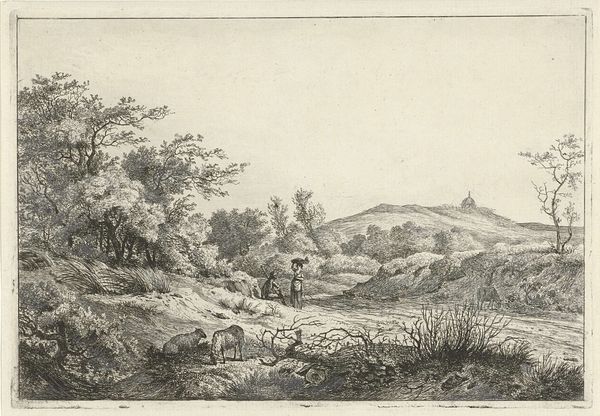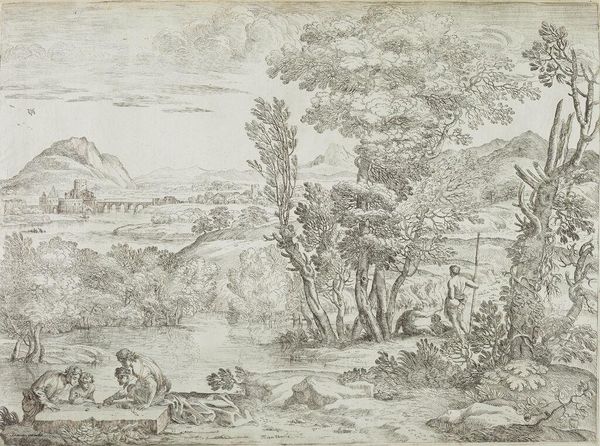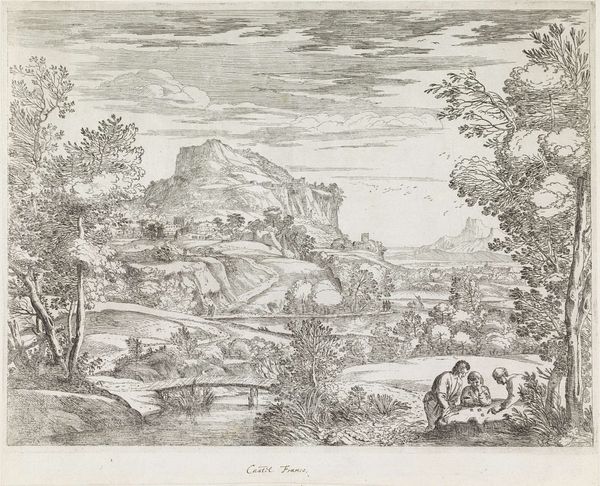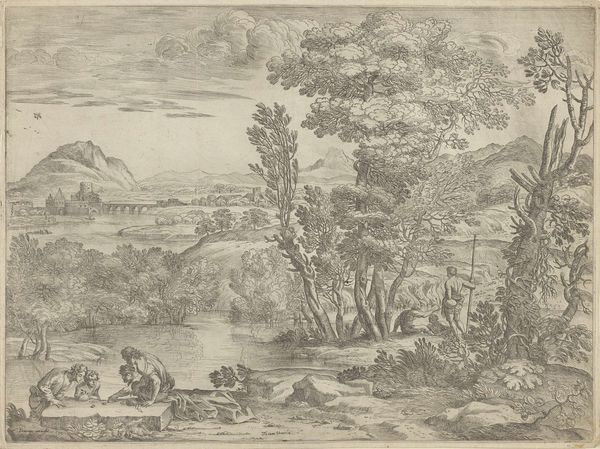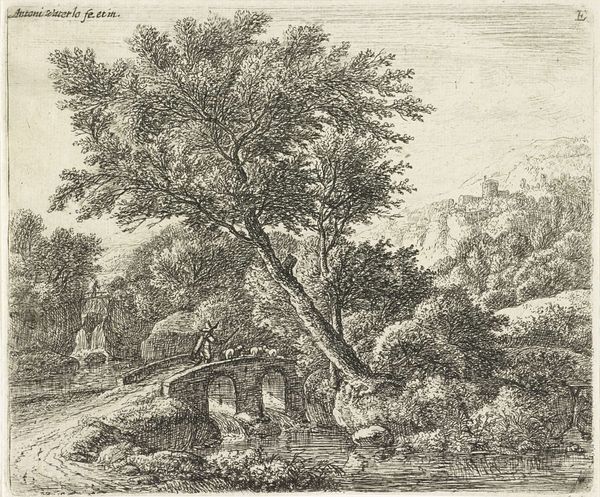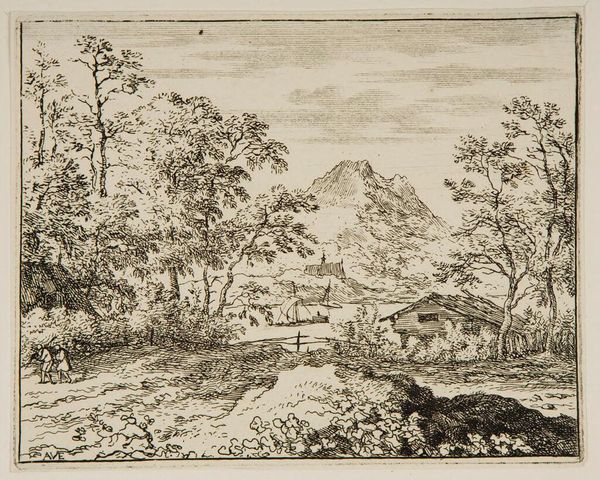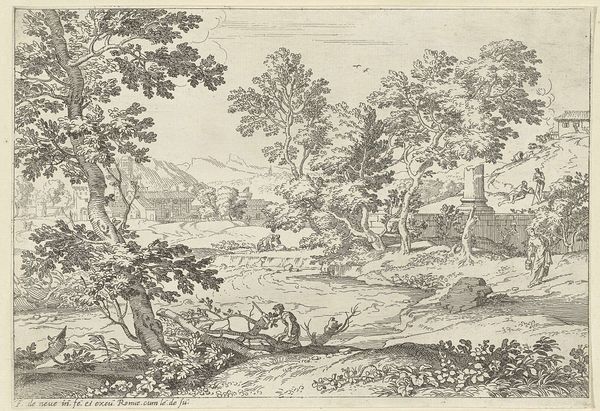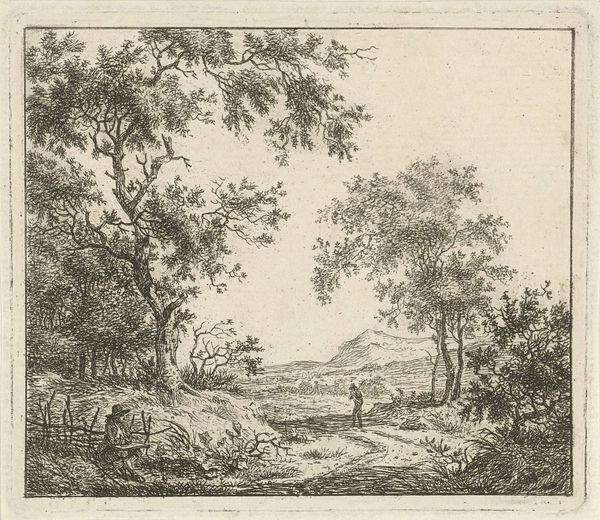
print, etching
#
baroque
# print
#
etching
#
landscape
#
figuration
Dimensions: height 130 mm, width 181 mm
Copyright: Rijks Museum: Open Domain
Moyses van Wtenbrouck created this small landscape with a laden donkey sometime in the first half of the 17th century, using etching techniques. The density of fine lines describes the verdant landscape. Note how the artist has built up tone by layering these etched marks, to create a sense of depth and atmosphere. Etching involves coating a metal plate with wax, then drawing through it with a sharp needle. The plate is then immersed in acid, which bites into the exposed lines. The longer it’s left, the deeper the lines will be, allowing for a richer, darker impression when printed. Landscape prints like this one were very popular, feeding a growing appetite for images of the world, both real and imagined. The relative ease of printing meant that images could be circulated widely and sold at relatively low prices. As such, the print is a distinctly commercial medium; a reflection of the rise of capitalism and a growing consumer culture. By focusing on the subtle material qualities of this print, we can better understand the economic and social context of its production.
Comments
No comments
Be the first to comment and join the conversation on the ultimate creative platform.
